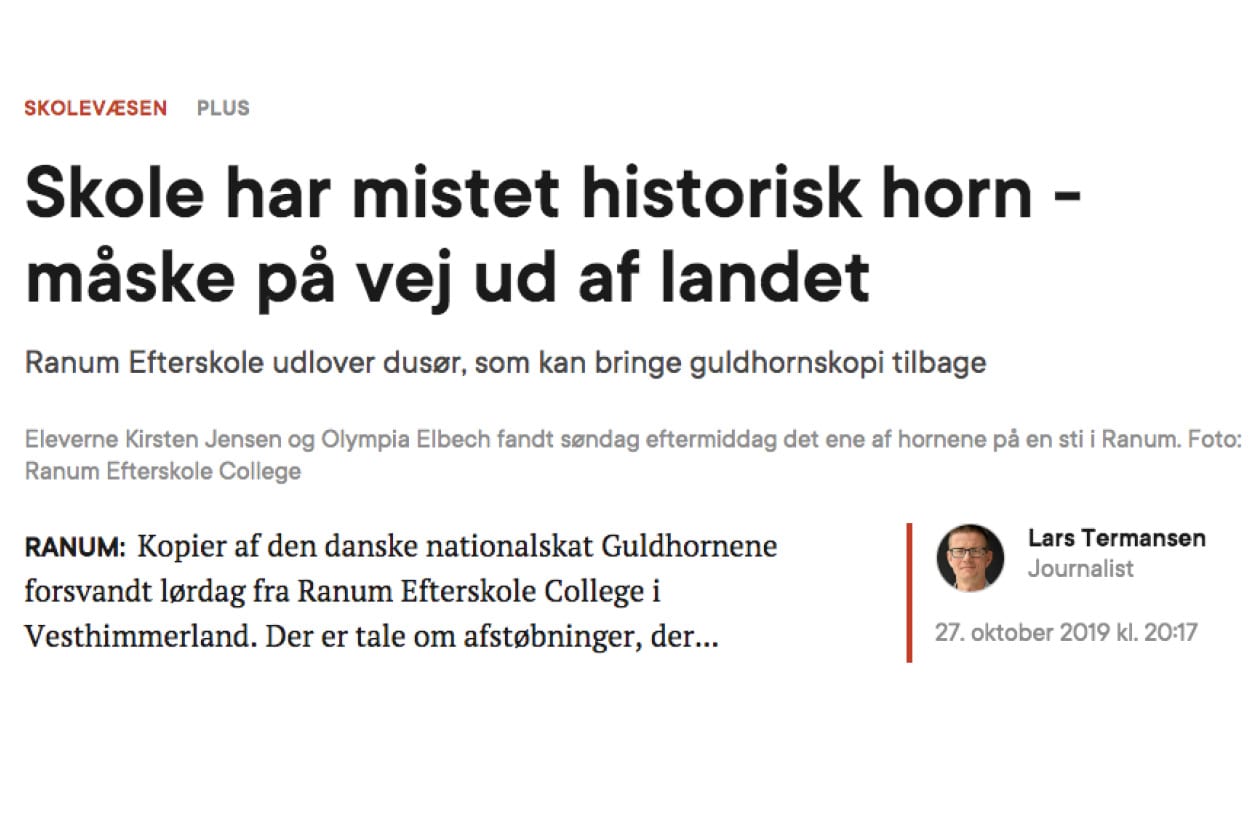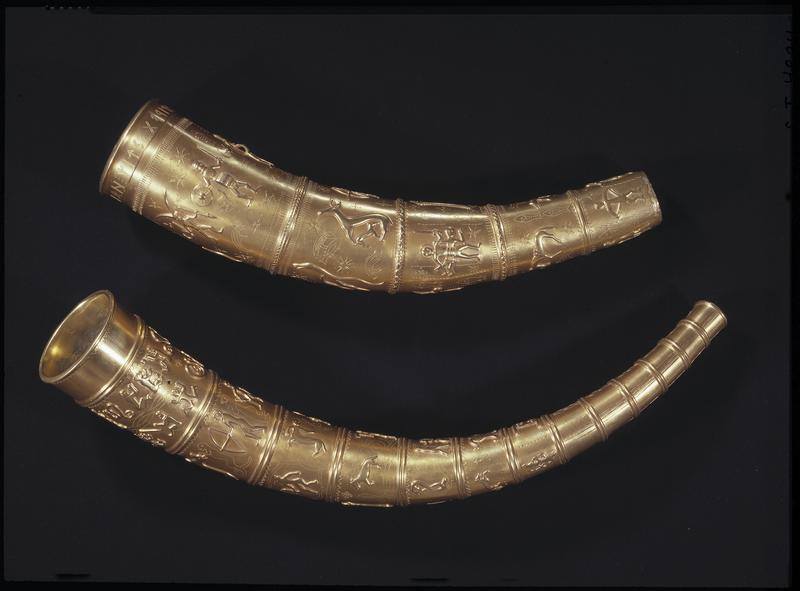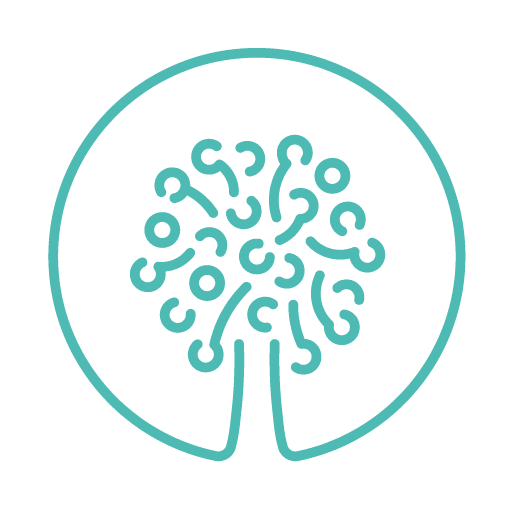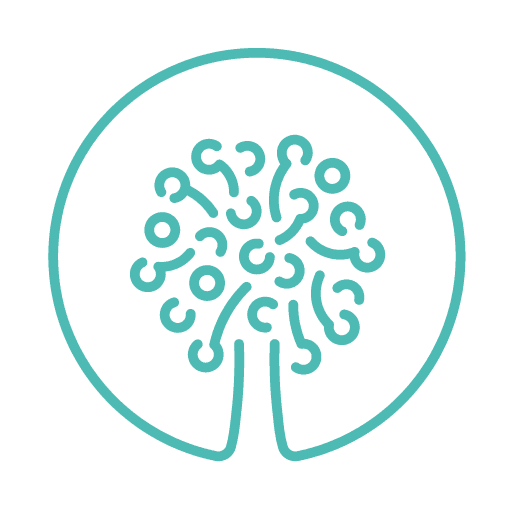
29 Oct The Golden Horns are back in Ranum
So this is a funny story. A story with a historical flavour, which we go to great lengths to protect. We've tried to provide an overview of the process, even though it's not quite finished yet. Let's hope we can bring it to a close soon.
Sunday In the morning, Brian goes about his usual cleaning routine in the main building. After a successful reunion day with 800 former students from 15 grades, Brian does the cleaning as usual. Things quickly take a turn when he arrives at the Golden Horn Hall. The two historic copies of the Golden Horns we have hanging above the entrance to the hall are gone. The Golden Horn copies have a valuable significance for the school as they date back to the school's origins in 1848. They are wanted on Facebook, and this is where the story really takes off.
Monday the search is not only shared on Facebook, Nordjyske writes an article about the missing horns, which also gets column space in the newspaper Nordjyske Stiftstidende.
The story reaches all the way to Copenhagen during the day. Olav, our headmaster, is invited to take part in Radio 24/7's show "Fedeabe's fyraften". You can hear it below:
After a major detective work, the biggest of the golden horns is back at Ranum Efterskole College. The story has generated reactions all over the country, starting with our Facebook post. The two girls at, Kirsten and Olympia, find the big horn by chance on a walk in the area around the school. Success!
Tuesday we can breathe a sigh of relief. The two golden horns have been found, and the little one is on its way to Ranum by Post Nord.
What can we learn from this story? Well, firstly, that there are a lot of loyal followers and supporters of Ranum. Secondly, we now have a procedure for hanging the Golden Horn above the Golden Horn Hall. Especially in the run-up to the reunion.
A little history
The Golden Horns was two horn from Germanic Iron Age which in the 1800s became a Danish national symbol and a significant symbol of the Danish national romanticism. They are the subject of Adam Oehlenschlaggerpoem of the same name. The horns were found at Gallehus at Møgeltønder in 1639 and 1734 respectively. In 1802 they were stolen and smelted, but copies were later made from drawings and exhibited at The National Museum. These copies were stolen from an exhibition in Jelling on 17 September 2007 and rediscovered. They are now on display at the National Museum in Copenhagen. // Wikipedia.

UPDATED.





